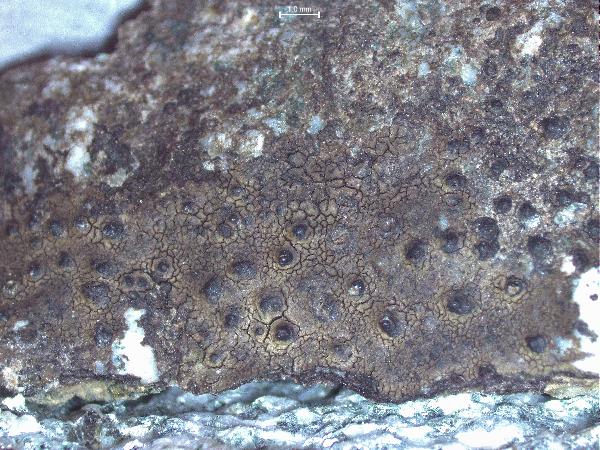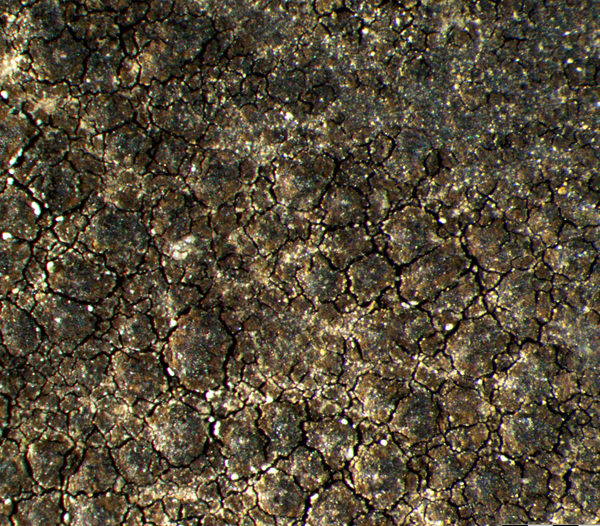Verrucaria aethiobola Wahlenb.
in Ach., Meth. Lich. Suppl.: 17, 1803.
Synonyms: Lithocia aethiobola (Wahlenb.) Stein; Pyrenula aethiobola (Wahlenb.) Ach.; Verrucaria aquilella Nyl.; Verrucaria catalepta Schaer. non (Ach.) Spreng.; Verrucaria chlorotica Hepp non Ach.; Verrucaria fuscocinerascens Nyl.; Verrucaria hibernica Zschacke; Verrucaria hydrela var. aethiobola (Wahlenb.) A. Massal.; Verrucaria laevata Ach. non auct. nec sensu Körb.; Verrucaria viridicana Erichsen
Description: Thallus crustose, episubstratic, not subgelatinous when wet, continuous to usually strongly rimose or cracked-areolate, (35-)50-120 μm thick, grey-green or pale to dark brown, smooth, matt to slightly glossy, up to several cm wide. Cortex poorly developed, paraplectenchymatous, with or without a brown pigment; medulla very thin, inconspicuous, without a black basal layer. Perithecia forming 0.2-0.5 mm wide, low to rather distinct projections, covered by a thalline layer on the flanks, with the black, naked, convex apex exposed, the ostiolar region visible as a pale, 20-110 μm wide, flat or depressed spot. Involucrellum limited to the apex or well-developed and spreading outwards and downwards almost to base-level; cell lumina in lower part of involucrellum not much enlarged, completely carbonised or with dotted pigmentation; exciple subglobose, 0.14–0.22 mm across, the wall c. 20 µm thick, colourless or patchily pale brown in lower part; hamathecium of c. 20 µm long periphyses and periphysoids, interascal filaments absent; hymenial gel hemiamyloid, I+ red (I+ blue at very low concentrations of I), K/I+ blue. Asci 8-spored, clavate, I-, fissitunicate, the wall thickened above, with an ocular chamber, dehiscent by extrusion of an endotunica to form a delicate rostrum, Verrucaria-type. Ascospores 1-celled, hyaline, ellipsoid, (21.5-)24-29(-35) x (8.5-)10.5-12.5(-14.5) μm, with a thin perispore. Photobiont chlorococcoid, the cells irregularly dispersed (not arranged in columns). Spot tests: K-, C-, KC-, P-, UV-. Chemistry: without lichen substances.
Growth form: Crustose
Substrata: rocks
Photobiont: green algae other than Trentepohlia
Reproductive strategy: mainly sexual
Periodically submerged (e.g. in creeks)
Commonnes-rarity: (info)
Alpine belt: absent
Subalpine belt: rare
Montane belt: rare
Dry submediterranean belt: very rare
Humid submediterranean belt: very rare
Padanian area: absent
pH of the substrata:
1 2 3 4 5
Solar irradiation:
1 2 3 4 5
Aridity:
1 2 3 4 5
Eutrophication:
1 2 3 4 5
Poleotolerance:
0 1 2 3
Altitudinal distribution:
1 2 3 4 5 6
Rarity
absent
extremely rare
very rare
rare
rather rare
rather common
common
very common
extremely common
Loading data...
Occurrence data
Predictive map
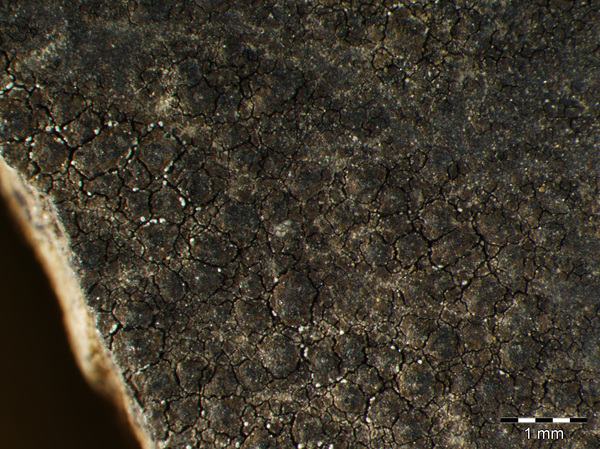
Harrie Sipman
Source: https://archive.bgbm.org/digitalimages/Aegean/Verrucaria/Ve_aethiobola59106.jpg
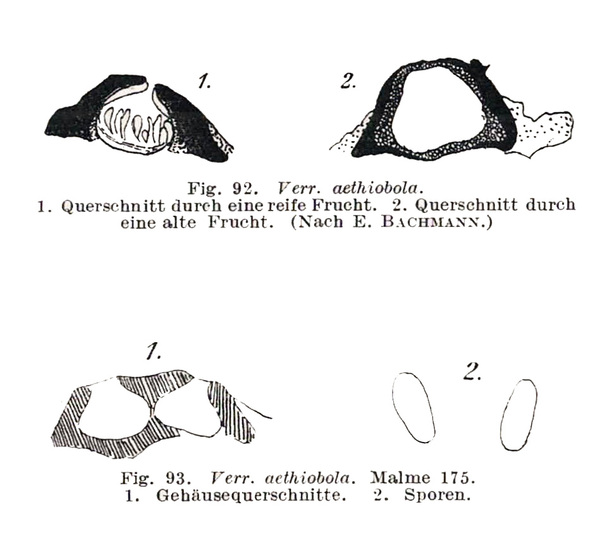
Zschacke, H. (1934) Epigloeaceae, Verrucariaceae und Dermatocarpaceae. In: Dr. L. Rabenhorst‘s Kryptogamen-Flora, Band 9, Abt. 1, Teil 1. Akademische Verlagsgesellschaft, Leipzig, 695 pp. - Public Domain
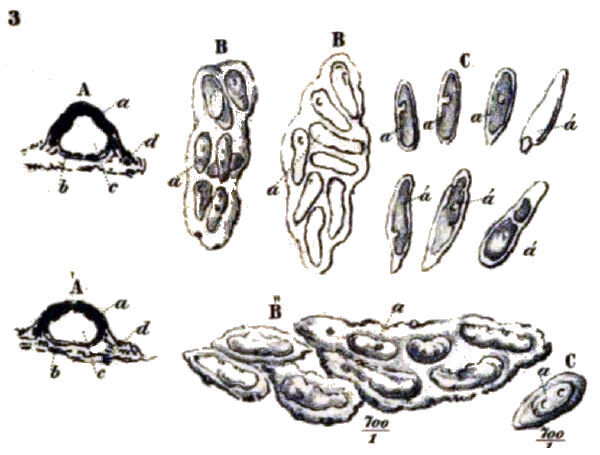
G. Gibelli, in S. Garovaglio, 1865 Tentamen Dispositionis Methodicae Lichenum In Longobardia Nascentium. Mediolanum
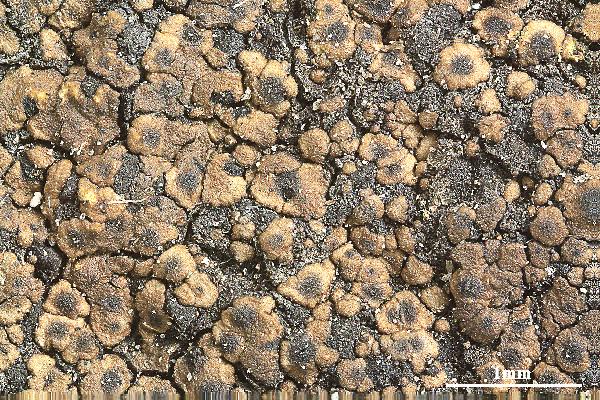
Felix Schumm - CC BY-SA 4.0
[ABL42025], Brazil, Bahia, Chapada Diamantina, Palmeiras, Morro do
Pai Inácio. On siliceous rock on table mountain. 12°27'24'' S, 41°28'20''
W, 1050 -1140 m. Leg. M. Cáceres & A. Aptroot (no 42025),
23.07.2017, det. A. Aptroot, 2017. - Spores simple, hyaline, 8/ascus,
21.5-35 x 8.5-14.5 μm, perispore up to 2 μm.
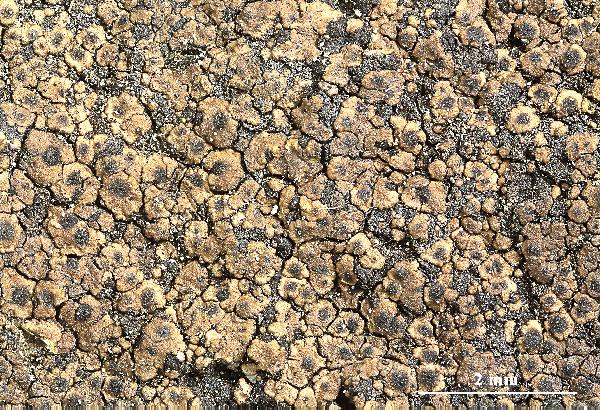
Felix Schumm - CC BY-SA 4.0
[ABL42025], Brazil, Bahia, Chapada Diamantina, Palmeiras, Morro do
Pai Inácio. On siliceous rock on table mountain. 12°27'24'' S, 41°28'20''
W, 1050 -1140 m. Leg. M. Cáceres & A. Aptroot (no 42025),
23.07.2017, det. A. Aptroot, 2017. - Spores simple, hyaline, 8/ascus,
21.5-35 x 8.5-14.5 μm, perispore up to 2 μm.
Growth form: Crustose
Substrata: rocks
Photobiont: green algae other than Trentepohlia
Reproductive strategy: mainly sexual
Periodically submerged (e.g. in creeks)
Commonnes-rarity: (info)
Alpine belt: absent
Subalpine belt: rare
Montane belt: rare
Dry submediterranean belt: very rare
Humid submediterranean belt: very rare
Padanian area: absent
pH of the substrata:
| 1 | 2 | 3 | 4 | 5 |
Solar irradiation:
| 1 | 2 | 3 | 4 | 5 |
Aridity:
| 1 | 2 | 3 | 4 | 5 |
Eutrophication:
| 1 | 2 | 3 | 4 | 5 |
Poleotolerance:
| 0 | 1 | 2 | 3 |
Altitudinal distribution:
| 1 | 2 | 3 | 4 | 5 | 6 |
Rarity
absent
extremely rare
very rare
rare
rather rare
rather common
common
very common
extremely common
Loading data...
Occurrence data
Predictive map

Harrie Sipman
Source: https://archive.bgbm.org/digitalimages/Aegean/Verrucaria/Ve_aethiobola59106.jpg

Zschacke, H. (1934) Epigloeaceae, Verrucariaceae und Dermatocarpaceae. In: Dr. L. Rabenhorst‘s Kryptogamen-Flora, Band 9, Abt. 1, Teil 1. Akademische Verlagsgesellschaft, Leipzig, 695 pp. - Public Domain

G. Gibelli, in S. Garovaglio, 1865 Tentamen Dispositionis Methodicae Lichenum In Longobardia Nascentium. Mediolanum

Felix Schumm - CC BY-SA 4.0
[ABL42025], Brazil, Bahia, Chapada Diamantina, Palmeiras, Morro do Pai Inácio. On siliceous rock on table mountain. 12°27'24'' S, 41°28'20'' W, 1050 -1140 m. Leg. M. Cáceres & A. Aptroot (no 42025), 23.07.2017, det. A. Aptroot, 2017. - Spores simple, hyaline, 8/ascus, 21.5-35 x 8.5-14.5 μm, perispore up to 2 μm.



